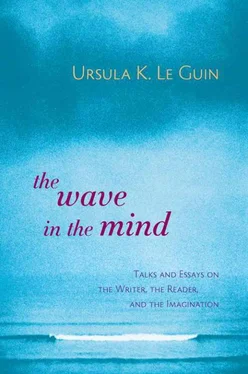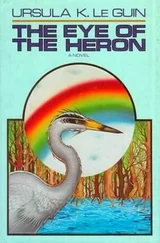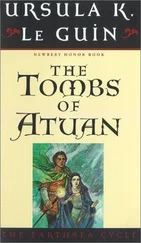Anything that left Charles Darwin unable to form even the most remote conjecture has got to be worth thinking about.
Pack rats and some magpies and crows are, I gather, more selective than bizcachas. They too take hard objects, but keep them in their nest, not outside the front door; and the objects are generally notable in being shiny, or shapely, or in some way what we would call pretty—like the gentleman’s watch. But, like the bizcacha’s clods and bits of dung, they are also notable in being absolutely useless to the collector.
And we have no idea what it is they see in them.
The male bowerbird’s collection of playpretties evidently serves to attract the female bowerbird, but has anyone observed crows or magpies using their buttons, spoons, rings, and can-pulls to enhance their allure? It seems rather that they hide them where nobody else can see them. I don’t believe anyone has seen a female pack rat being drawn to the male pack rat by the beauty of his collection (hey, honey, wanna come down and see my bottletops?).
My father, an anthropologist with interests that ranged from biology to aesthetics, kept a semipermanent conversation going—like the famous thirty-year-long poker game in Telluride—on the subject of what beauty is. Hapless visiting scholars would find themselves at our dinner table hotly discussing the nature of beauty. An aspect of the question of particular interest to anthropology is whether such concepts as beauty, or gender, are entirely constructed by each society, or whether we can identify an underlying paradigm, a universal agreement, throughout most or all societies, of what is man, what is woman, what is beautiful. Somewhere in the discussion, as it gathered weight, my father would get sneaky, cross species, and bring in the pack rat.
It is curious that evidence for what looks like an aesthetic sense—a desire for objects because they are perceived as desirable in themselves, a willingness to expend real energy acquiring something that has no practical end at all—seems to turn up only among us, some lowly little rodents, and some rowdy birds. One thing we three kinds of creature have in common is that we are nest builders, householders, therefore collectors. People, rats, and crows all spend a good deal of time gathering and arranging building materials, and bedding, and other furniture for our residences.
But there are many nesters in the animal kingdom, far closer to us genetically than birds or rodents. What about the great apes? Gorillas build a nest every night. Zoo orangs drape themselves charmingly with favorite bits of cloth or sacking. If we shared any collecting tastes with our closest relatives, it might indicate a “deep grammar” of beauty—a “deep aesthetic”?—in all us primates, or at least in the big fancy ones.
But alas I know no evidence of wild apes collecting or prizing objects because they seem to find them pretty. They examine objects of interest with interest, but that’s not quite the same as stealing something because it’s small and shiny and hiding it away as a treasure. Intelligence and the sense of beauty may overlap, but they aren’t the same thing.
Chimpanzees have been taught or allowed to paint, but their motivation seems to be interactive rather than aesthetic: they appreciate color and evidently enjoy the act of whacking the paint on the canvas, but they don’t initiate anything remotely like painting on their own in the wild; and they don’t prize their own paintings. They don’t hide them, hoard them. It appears that they’re motivated to paint because people they like want them to paint. Their reward is less the painting than the approval of these people. But a crow or a pack rat will risk its life to steal something that offers no reward of any kind except its own shiny self. And it will hoard that stolen object of beauty, treasuring and rearranging it in its collection, as if it were as precious as an egg or an infant.
The interplay of the aesthetic with the erotic is complex. The peacock’s tail is beautiful to us, sexy to the peahen. Beauty and sexual attractiveness overlap, coincide. They may be deeply related. I think they should not be confused.
We find the bowerbird’s designs exquisite, the perfume of the rose and the dance of the heron wonderful; but what about such sexual attractors as the chimp’s swollen anus, the billy goat’s stink, the slime trail a slug leaves for another slug to find so that the two slugs can couple, dangling from a slime thread, on a rainy night? All these devices have the beauty of fitness, but to define beauty as fitness would be even more inadequate than most reductionist definitions.
Darwin was never reductionist. It is like him to say that the bowerbird makes its elegant passage “for playing in”—thus leaving the bowerbird room to play, to enjoy his architecture and his treasures and his dance in his own mysterious fashion. We know that the bower is attractive to female bowerbirds, that they are drawn to it, thus becoming sexually available to the male. What attracts the females to the bower is evidently its aesthetic qualities—its architecture, its orderliness, the brightness of the colors—because the stronger these qualities are, the greater the observable attraction. But we do not know why. Least of all, if the sole end and purpose of the bower is to attract female bowerbirds, do we know why we perceive it as beautiful. We may be the wrong sex, and are certainly the wrong species.
So: What is beauty?
Beauty is small, shapely, shiny things, like silver buttons, which you can carry home and keep in your nest/box.
That’s certainly not a complete answer, but it’s an answer I can accept completely—as far as it goes. It’s a beginning.
And I think it interesting, puzzling, important that my appreciation of small, hard, shapely, shiny things is something I share with bizcachas, pack rats, crows, and magpies, of both sexes.
RHYMESTERS
Humpback whales sing. The males sing mostly in breeding season, which implies that their songs play a role in courtship. But both sexes sing; and each humpback population or nation has its distinctive song, shared by all citizens. A humpback song, which may last as much as half an hour, has a complex musical organisation, structured by phrases (groups of notes that are the same or nearly the same in each repetition) and themes (groups of repeated similar phrases).
While the humpbacks are in northern waters they don’t sing very much, and the song remains the same. When they regroup in the south, they all sing more, and the national anthem begins changing. Both the song and the changes in it may well serve to confirm community (like street slang, or any group jargon, or dialect). Every member of the community learns the current version, even when it is changing rapidly. After several years the whole tune has been radically altered. “We will sing to you a new song.”
Writing in Natural History , in March 1991, Kary B. Payne asks two questions of the whales: How do you remember your song, and why do you change it? She suggests that rhyme may help in remembering. Whale songs with a complex set of themes include “rhymes”—phrases that end similarly—and these rhymes link one theme to the next. As for the second question, why they keep changing and transforming their communal song, she says, “Can we speculate about this, and about whales’ use of rhymes, without thinking of human beings and wondering about the ancient roots in nature of even our aesthetic behavior?”
Payne’s article reminded me irresistibly of the poet/linguist Dell Hymes’s work on oral narratives in his book In Vain I Tried to Tell You and other books and articles. One such observation (summarised very crudely) is of the value of the repetitive locutions that mark divisions in Native American oral narratives. Such locutions often begin a sentence, and if translated appear as something like “So, then…” or “Now, next it happened…” or just “And.” Often discarded as meaningless, as noise, by translators intent on getting the story and its “meaning,” these locutions serve a purpose analogous to rhyme in English poetry: they signal the line , which, when there is no regular meter, is a fundamental rhythmic element; and they may also cue the larger, structural rhythmic units that shape the composition.
Читать дальше



